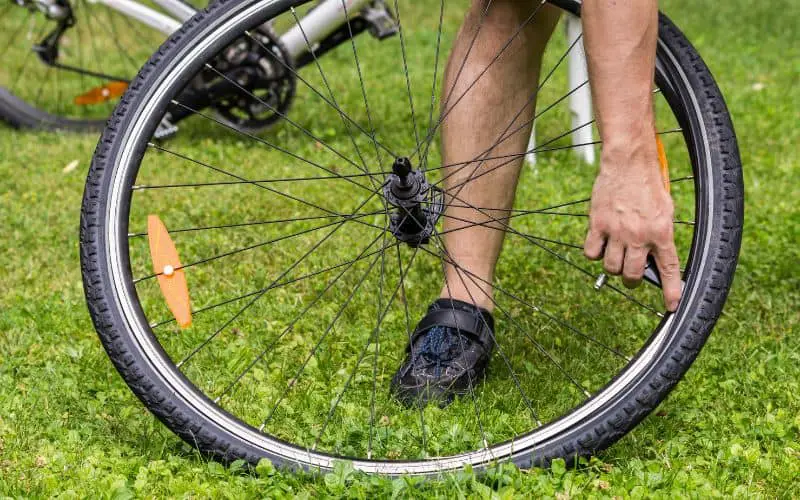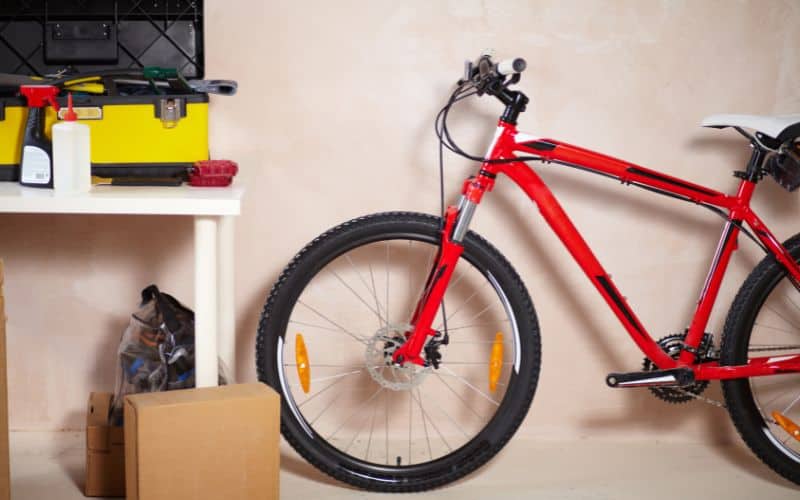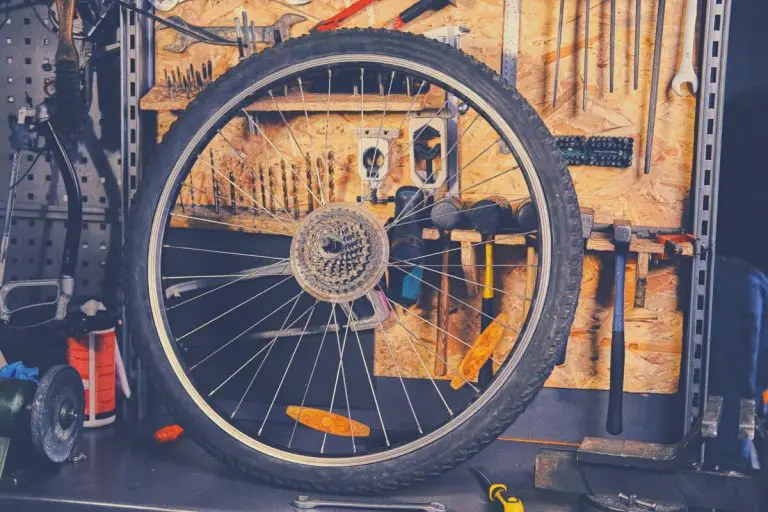Your bike wheels are essential to keep your performance up and safe while you are out on your ride. I know that I am always checking on my bike wheels, especially when I notice that they are not in the best shape.
Bike wheels are similar to car wheels, which have an expected lifespan before needing to be replaced. If you plan to take your bike out for a cross-country trip in the near future, you should probably check on your bike tires and see if they need to be replaced.
The (unfortunate) perk of being a cyclist and taking on the open road or bike trail means that you need to keep your bike up to date with maintenance.
When Should I Replace My Bike Wheels?
Bike tires are meant to last anywhere from 1000 to 3000 miles. This depends on their quality and condition when you start thinking about that change.
I haven’t quite made it to 3000 miles on a set of tires, but 2000 has been more or less the average lifespan. Depending on how often you ride, this could be a year or a few years before you need to buy new tires.
While traditional wear and tear can break down a bike, there are other factors that can cause the bike wheels to start to decline. If you notice that the tread is gone on one of your tires, and you are not stopping safely when you hit the brakes, then it is time to replace your bike wheels.

Signs My Bike Wheels Need To Be Replaced
There are a few signs that you can look out for that indicate that your bike wheels are on the outs. These signs are the most common signs, and avid bikers know how to prepare themselves when it is time to make that transition.
Worn Down Tread
Just like in a car, motorcycle, or UTV, the tires will wear down over time. New tires come with thick tread, and as you add miles, the tread will slim down. When the grip has worn down, and there seem to actually be smooth spots in the tire, this can be a safety concern.
Visually, a worn-down tire will have cracks along the tire or ridges from the rim where it is cutting into the tire. You definitely do not have the thick ridges and grip that the bike tires had when you first purchased them.
Holes In The Tire
You are exposing your tires to potential damage any time you ride on asphalt roadways or rough terrain on cross-country rides. This means they could pop or puncture at any time. Sharp edges on rocks, potholes, or debris that are in the way can slice your bike tires.
Most holes start off small, but they will stretch and grow, becoming more of an issue. You can patch a small hole or two in your tires to get more life out of them, but that is only temporary.

Consistently Losing Air
If you are finding yourself having to put air in your tires constantly, it may be time to go ahead and replace them.
What starts out as putting air in your tire once every couple of weeks will turn into once a week, and then every other day. Once you have inspected the rim and determined that they are not cracked and impairing the tire, you can move forward with a tire replacement.
Can I Upgrade My Bike Wheels When I Replace Them?
You are not limited to replacing the wheels you had when it is time to get a new set. If you have been thinking about upgrading your bike wheels, the best time to do that is when you are going to replace them.
Maybe the last set of tires was all you could afford at the time, and now you can upgrade your bike wheels. You do have the choice to choose whatever tire set that you want on your bike!
Are There Benefits To Upgrading My Bike Wheels?
It is important to note that not all bike wheels are made the same. I certainly had to find that out the hard way, but it was a lesson worth learning.
There are many bike tires that appear to be more affordable and play on your funds. However, cheaper is not always better, and this is very true for bike wheels. There are several benefits to making that upgrade.
- Longer lifespan
- Thicker tires
- Safety concerns
- Performance
Longer Lifespan
The better quality of the bike wheel, the longer it will last. The type of material used and designs help mold bike wheels to their environment so they are not wearing down as fast. This is essential to use the bike on different terrains.
Thicker Tires
More expensive tires are thicker so that they can withstand the environment where you are riding. They have the ability to hold up better in various conditions. Whether that be debris, sharp edges in the backcountry or potholes along the highway.

Safety Concerns
If you have a lower-quality tire on your bike, you may not be comfortable taking on long rides and trails that can get you far away from others. When you take on any bike trail, you need to be as safe as possible. That means having bike wheels that will not let you down if you need to get out of danger in a hurry.
Performance
Not all bikes are used the same way, and neither are tires.
Just like you can buy a bike based on how you plan to ride it. You can also purchase bike wheels that match that same work and improve your overall performance.
Some bike tires are meant for highway driving, while others are designed to handle the rocks, sand, and mud you encounter if you are a backcountry rider.
You may also be interested in Best Electric Bike Pump – Buying Guide.

